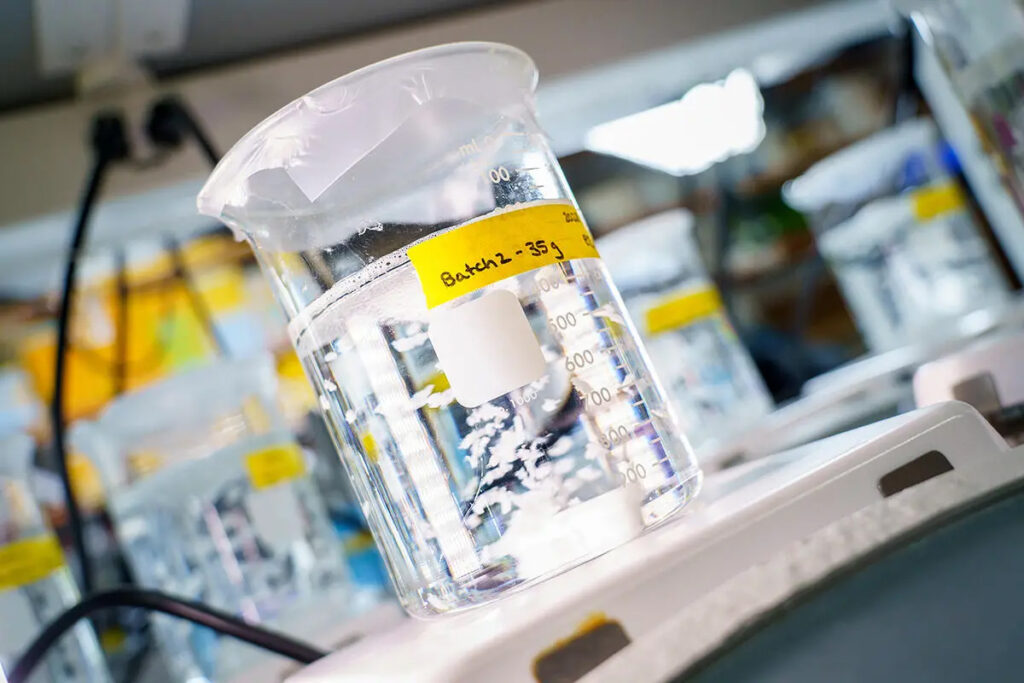Tissue Healing from the Inside Out Through a Pioneering Biomaterial

A research team from the University of California San Diego recently published the results of their study. They produced an innovative material that can be injected intravenously. The researchers say that the pioneering biomaterial can reduce inflammation and stimulate tissue and cell repair. They announced that the biomaterial could treat heart attack-induced tissue damage through their various tests on lab animals like rodents and other larger animals. The researchers also showed proof of concept based on their rodent study, which suggests that the biomaterial will be beneficial in treating pulmonary arterial hypertension and traumatic brain injury.
Treating impaired tissues
Lead researcher and bioengineering professor Karen Christman, who developed the biomaterial, said that the product could treat damaged tissues from the inside out and suggested that it is a new move towards regenerative engineering. Prof. Christman said they could start to evaluate the effectiveness and safety of the biomaterial in humans in one or two years.
Tissue impairment after a heart attack
The estimate of new heart attack cases in the U.S. is about 785,000 annually. There is no fixed treatment for repairing the cardiac tissue due to a heart attack. Scar tissue develops after an attack, which reduces muscle heart muscle function. If this happens, the patient can suffer from congestive heart failure. Cardiologists say congestive heart failure, acute myocardial infarction, and coronary artery diseases are today’s most taxing public health problems. They face patients with heart disease each day and want another therapy that can reduce debilitating symptoms and improve patient outcomes.
Developing the biomaterial
Prof. Christman’s team initially developed a hydrogel material during their previous studies. They created a natural scaffold using cardiac muscle tissue (extracurricular matrix), which they injected using a catheter into the damaged heart muscle. In 2019, they reported the success of their phase one clinical trial on a human subject. The injected gel forms a scaffold in the heart’s damaged areas, thereby encouraging the growth of new cells and repairing the damaged part.
However, there were restrictions on their initial trial. Since the gel material has to be injected directly into the heart muscle, they can only use it one week or more after the attack because of the risk of causing further damage due to injecting the material if they do it earlier.
The research team wants to produce a material they could use immediately after the patient has a heart attack. The need spurred them to develop a new biomaterial that could be infused into the heart’s blood vessels. They wanted something similar to angioplasty, a material they could inject intravenously or a stent.
The paper’s first author, Dr. Martin Spang, further explained that they wanted to design a biomaterial that they could deliver to tissues and organs that are difficult to access. They produced a method to use the vessels that supply blood to tissues and organs. Their tests revealed that the biomaterial could be evenly distributed over the damaged tissue because it is delivered intravenously. On the other hand, when they inject hydrogel through a catheter, the material does not spread out and only stays in a specific location.

Development process
During their safety trials, the researchers first developed the hydrogel, which was compatible with blood injections. Still, the hydrogel’s particle size was too big to pinpoint the leaky blood vessels. Dr. Spang solved the issue by putting the liquid substance that forms the hydrogel in a centrifuge to strain the bigger particles and only retain the nano-sized particles, which Dr. Spang put through dialysis and sterile filtering. After the purification process, the material was freeze-dried. The researchers ground the material into a fine powder, added sterile water and developed a biomaterial that can be infused or intravenously injected into the heart’s coronary artery.
Better than expected results
The research team tested their biomaterial on a lab rodent model for heart attack testing. They injected the biomaterial and expected it to pass through the blood vessels into the heart tissue. That is what they anticipated because gaps developed between the blood vessels’ endothelial cells during a heart attack.
They realized that the biomaterial bound to the endothelial cells and closed the gaps. Moreover, the material accelerated the blood vessels’ healing and reduced inflammation. They also tested it on lab pigs and achieved the same results.
The team also successfully tested the biomaterial to target other types of inflammation. They tested using rat models of pulmonary arterial hypertension and traumatic brain injury. The team will conduct further pre-clinical studies for these latter conditions.
Future work
Dr. Spang added that it is now possible to treat other tissues and organs that are difficult to access using their biomaterial. On the other hand, Prof. Christman, in partnership with Ventrix Bio, Inc., where she is the co-founder, will seek FDA authorization to use the new biomaterial and conduct studies on humans with heart conditions. The FDA approval means human clinical trials can start in one to two years.
Surgeons and cardiologists believe they can help more patients with heart diseases. For example, they said they treat myocardial infarction and severe coronary artery disease to forestall left ventricular dysfunction, which can lead to congestive heart failure.